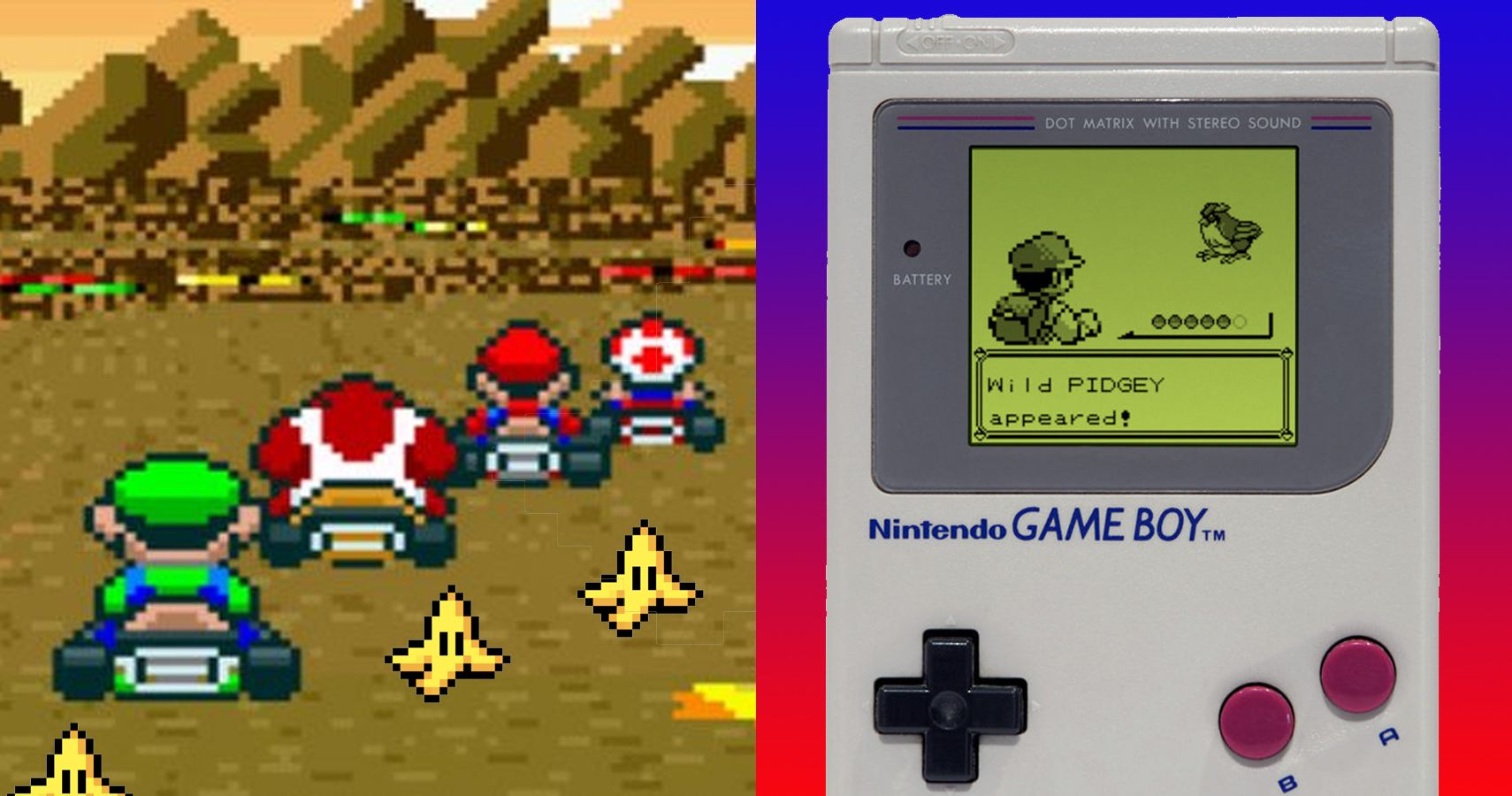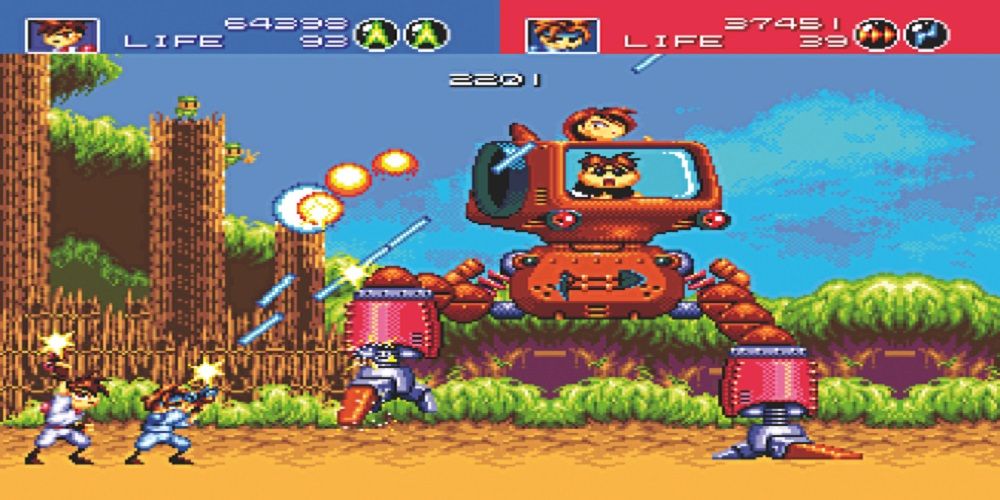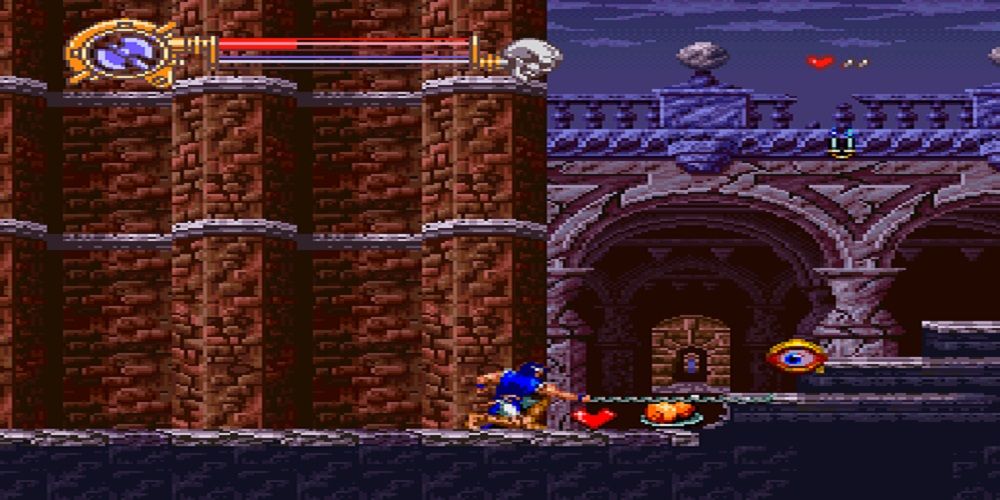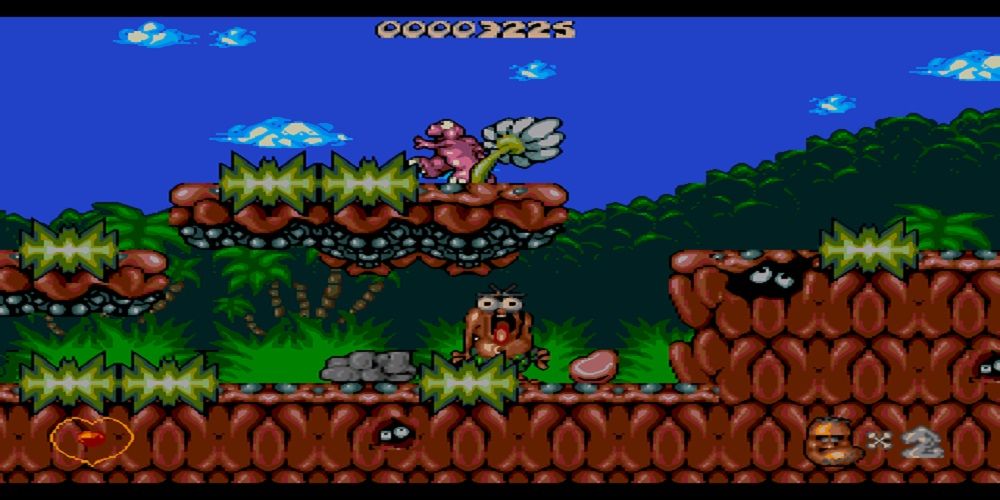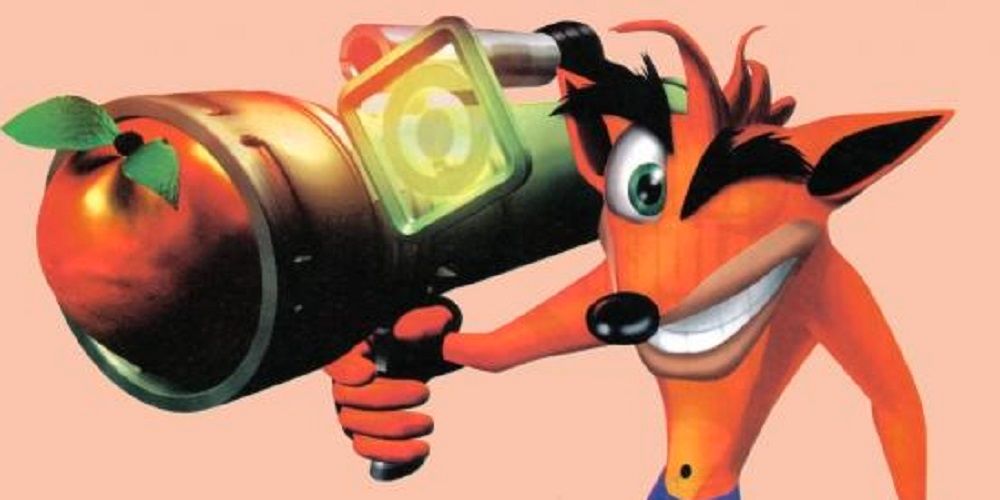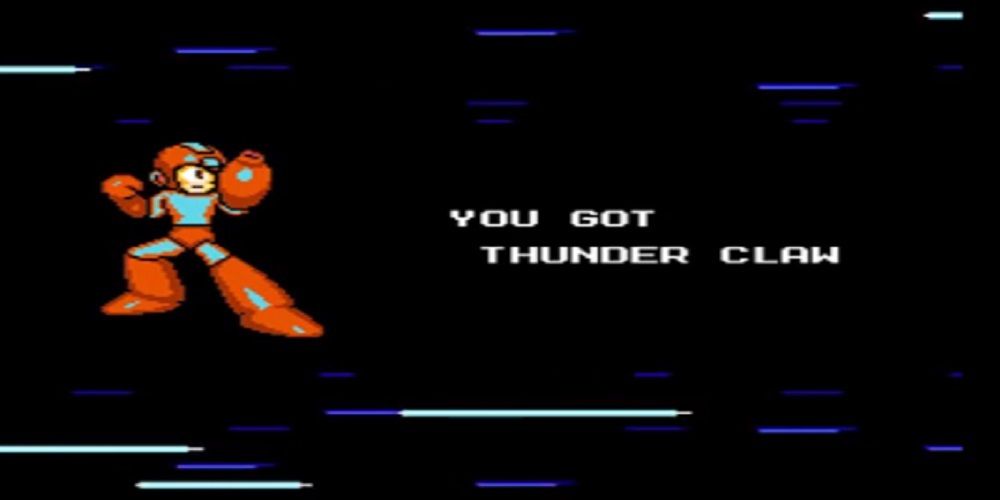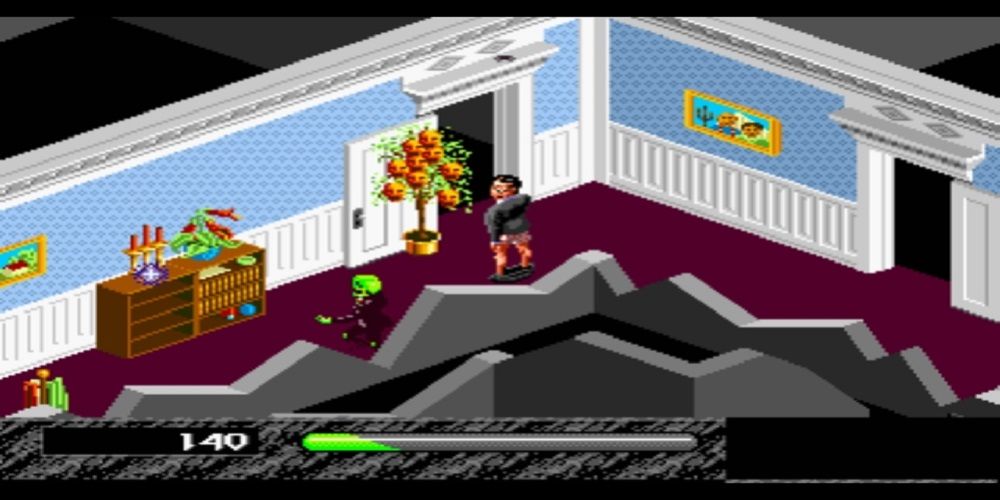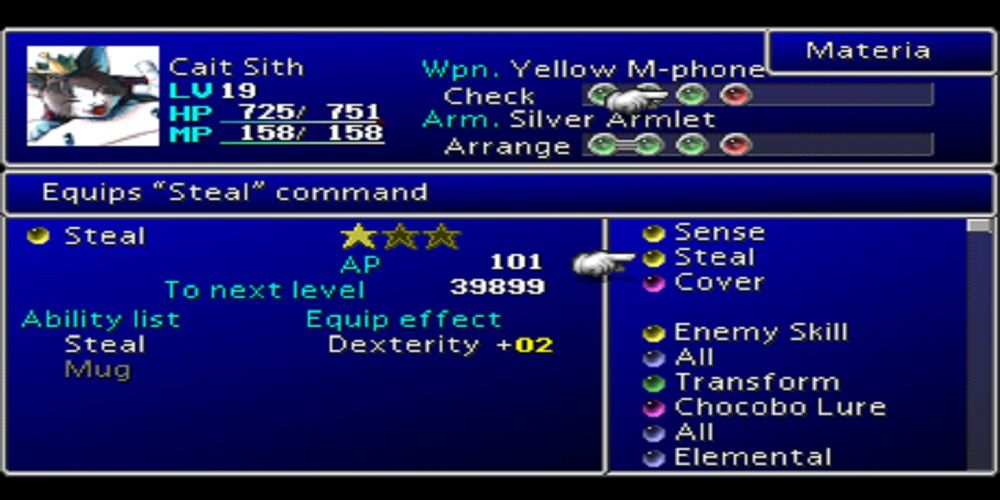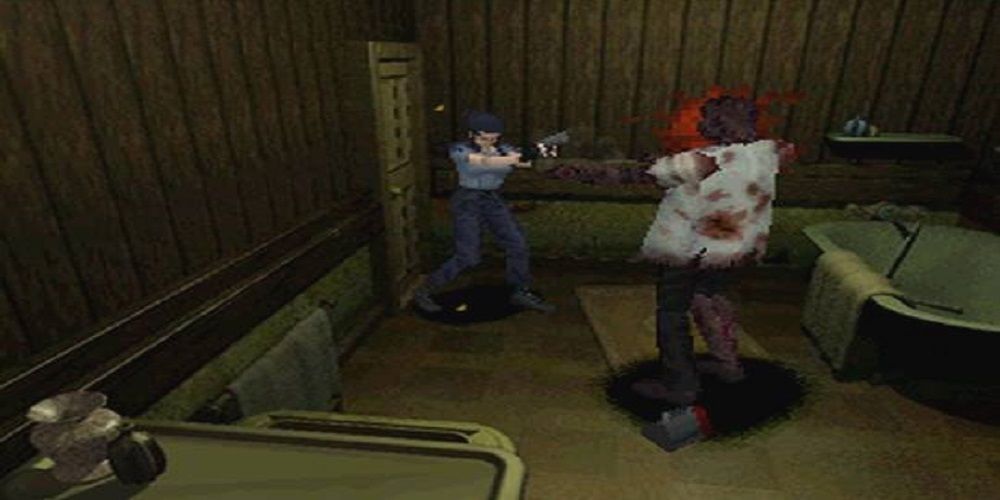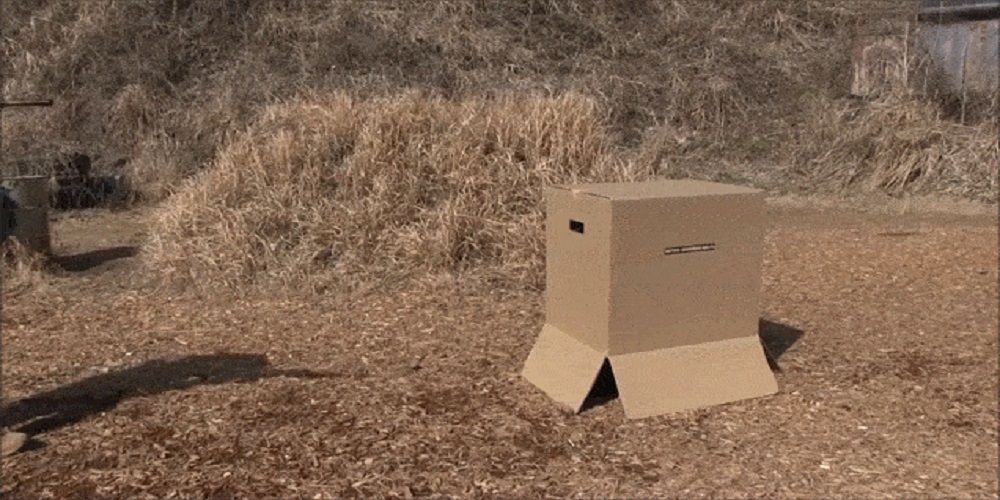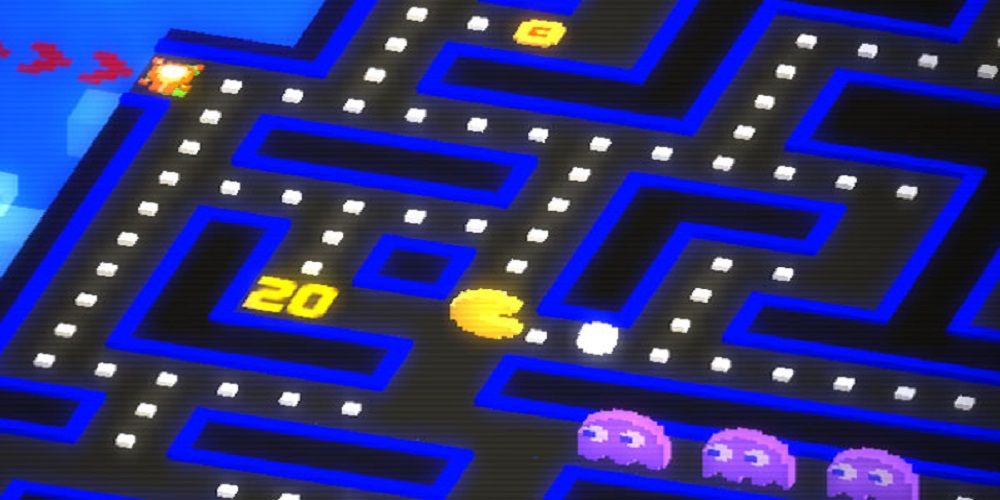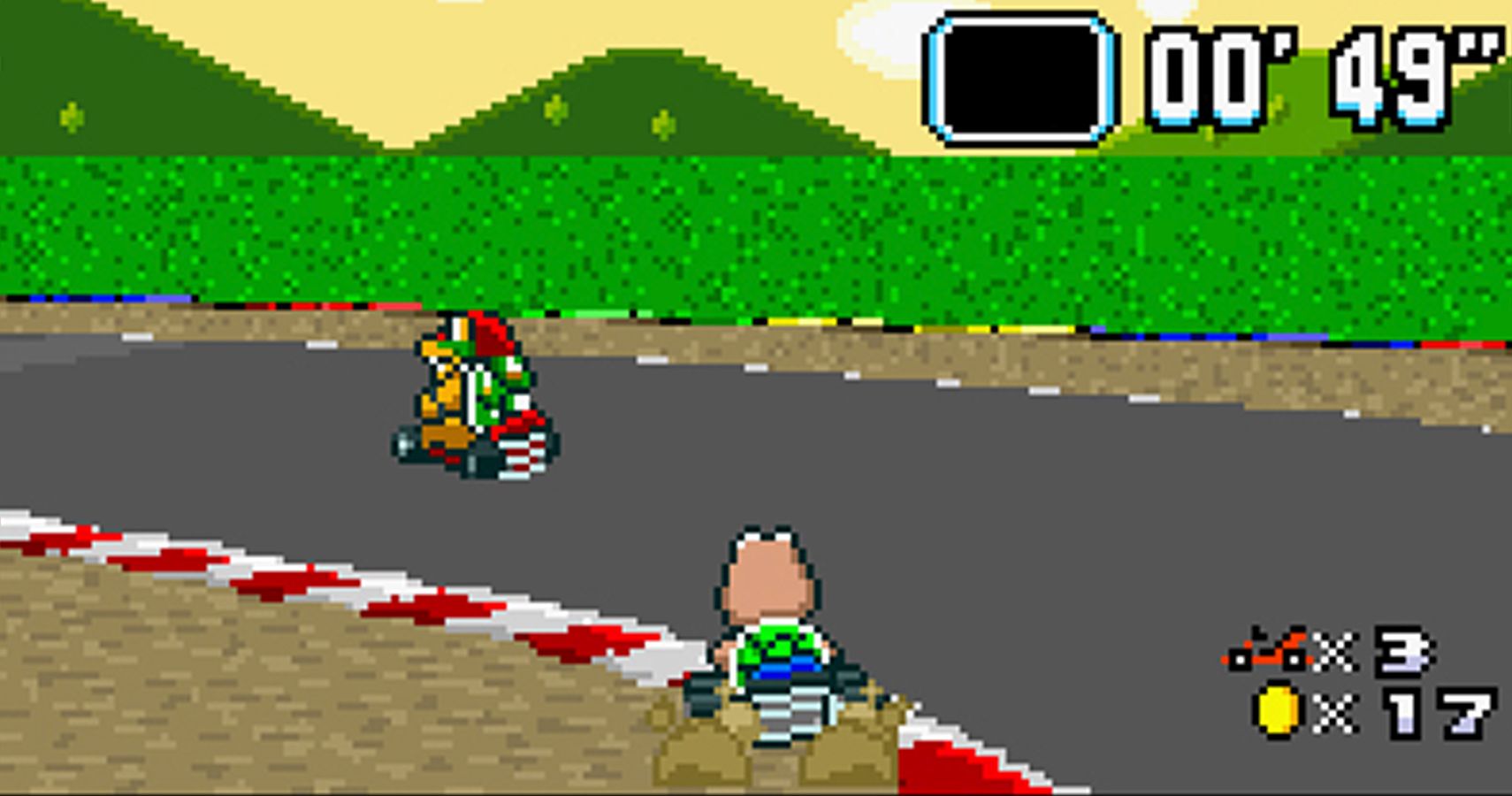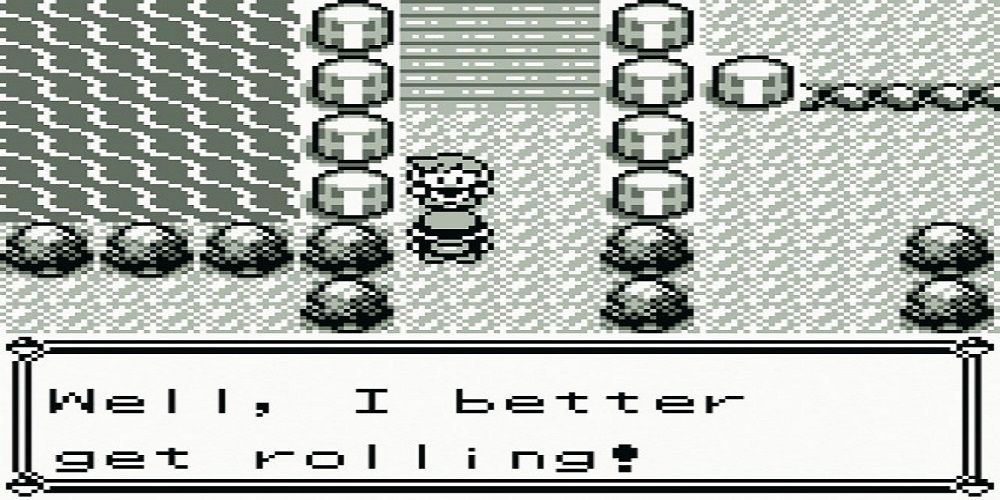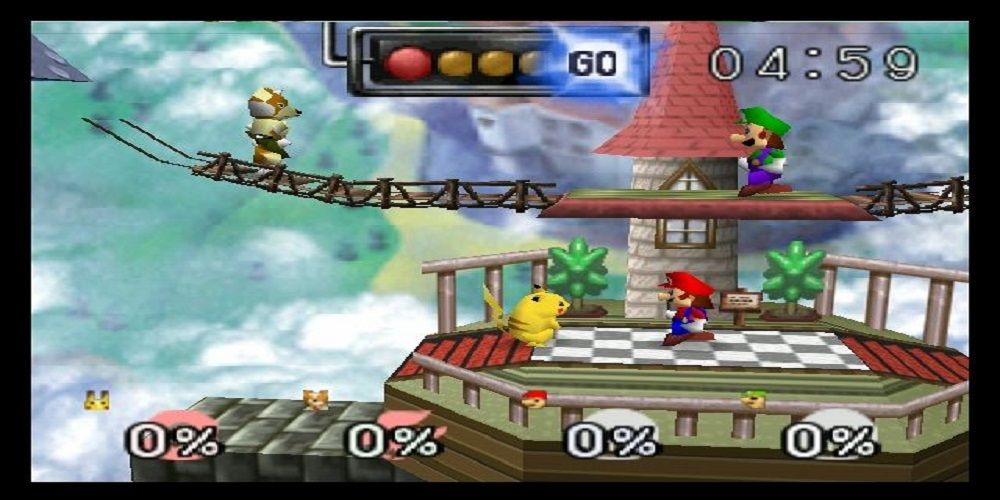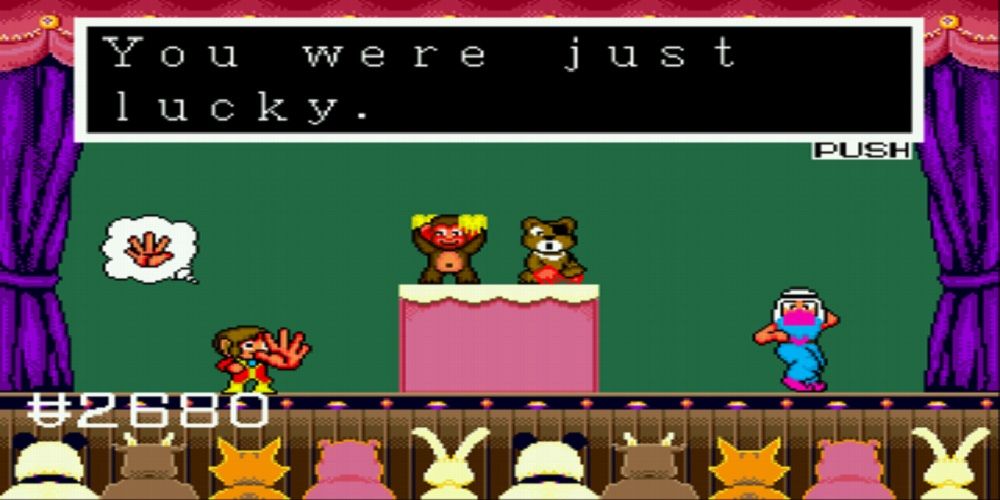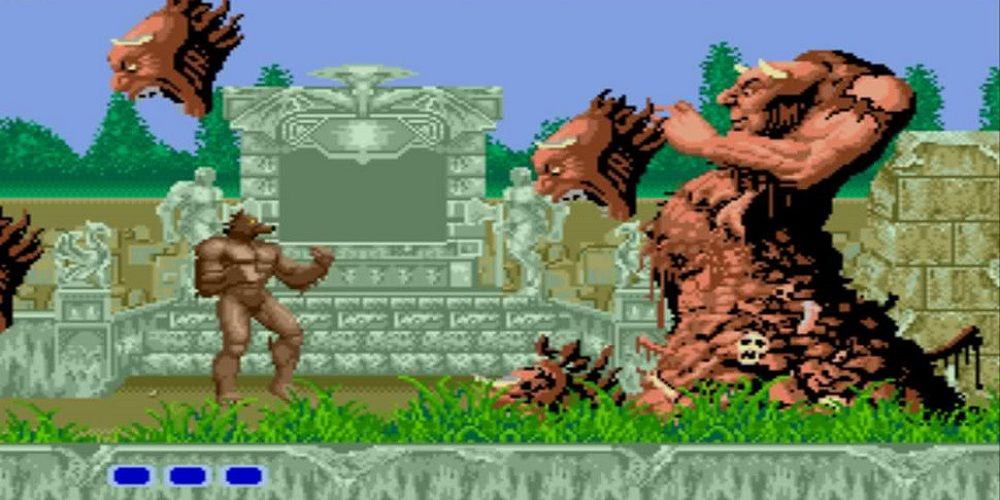This brave new world of 2017 isn’t quite as futuristic as the sci-fi writers of the eighties and nineties predicted. We’ve not got those Back to the Future hover boards yet, for example. Nobody’s developed a Justin Bieber-seeking missile yet, McDonald's don’t deliver yet… clearly, science is putting all its research money in all the wrong places. It’s enough to make me want to cancel my subscription to life for 2018.
That said, though, one thing we do have is a range of firmly-developed mechanics for video games. When it comes to FPS titles, for instance, there’s an understood and accepted system of loadouts, perks and K/Ds we can expect. That’s just the way things work around here, buddy boy. But it wasn’t always this clear cut. Someone had to break the mold, be the trailblazer, and introduce this stuff in the first place. Which is where retro games come in.
These days, a lot of developers tend to stick to their guns and not take any risks. That way lies cash-tacular profits, and what makes these guys happy? Cash-tacular gains, that’s what. In decades past, games were a little more creative, and as I say, the ‘rules’ weren’t quite so clearly defined then. For these reasons, there are some very cool mechanics to take a look back at. Which, you may have noticed by that big ol’ header text there, is exactly why we’re here today.
Some of these mechanics have become fundamental parts of a franchise. Others didn’t catch on. Either way, they’re damn good ideas. Settle in for 15 of the Coolest Mechanics in Retro Games.
15 Gunstar Heroes’ Weapon Switching
If you’re a fan of Ye Olde run-and-gun side scrollers, you’ll no doubt be familiar with Gunstar Heroes. It hit the Genesis in 1993, was brought to us by genre masters Treasure, and continues to give me a warm, fuzzy feeling in my nostalgia-gland to this day.
The premise is simple enough: a dastardly and bastardly empire want to awaken an almighty death-bot, Golden Silver, and use it to destroy the planet. The goodly Gunstar brothers, Red and Blue, don’t take kindly to that idea and must cruise through levels Contra-style to destroy their forces and thwart their plan.
My favourite aspect of the game is its weapon switching system. You have two different slots, and four types of ammo to put in them: Force, Lightning, Flame and Chaser. The player can double up for a stronger version of one type (two Flame makes for a longer, more powerful flamethrower, for instance), or combine them for various effects (Chaser and Lightning results in an enemy-seeking beam). Early shooters had a tendency to be quite repetitive, but this kind of customization did a lot for the game’s replayability.
14 Castlevania Wall-Whipping
In the early days of Castlevania, the series was more of a simplistic action platformer. The genre ‘Metroidvania,’ as we now know it, had yet to become a thing and the games were much more linear. This is isn’t to say that they weren’t utterly badass, let’s not kid ourselves, just that the whole exploring-a-stupidly-expansive-secrets-amundo-Dracula’s-castle thing hadn’t kicked in yet.
The amount of secrets hidden in 1997’s Symphony of the Night, say, would make you lose bowel control at 100 paces. Alucard’s adventure is the kind of game that you can lose yourself in today; it still holds up surprisingly well. My favourite Castlevania mechanic, though, lies in the way things were hidden. The first time a wayward whip swipe missed an enemy and hit the wall instead, only for it to crumble and reveal a hidden passage, I lost my mind. I credit my hobby of traveling to Transylvania and attacking every inch of the architecture with a whip to this first amazing Castlevania experience.
13 Chuck Rock’s… Rocks
Here’s one from the more obscure end of the retro spectrum. Even more experienced retro heads might not be familiar with Chuck Rock. At fancy-ass cocktail parties for A-list video game mascots, he’s one of the guys they’ve got handing out drinks to Sonic, Mario, and those guys.
For the uninitiated, Chuck Rock is a caveman (in a toontastic Flintstones sort of way) who starred in 1991’s Chuck Rock, which spawned a couple sequels. He was a burpin’, fartin’ beer-bellied sort of guy (‘belly bounce’ was his attack of choice to dispatch enemies with), because that sort of humour was all the rage back then. What I loved about this platforming series was its use of rocks. These were strewn around the levels and came in a few different sizes. Chuck could lift, carry and throw them — simple as it sounds, these rocks had all kinds of creative uses. They were as handy for defeating enemies as they were for solving puzzles, reaching secrets, and everything else in between. Such a perfect core platforming mechanic from an age-gone-by.
12 Crash Bandicoot 3: Warped’s Fruit Bazooka
The 'Mario vs Sonic' wars of the nineties raged at recess across the world. Rival factions weren't allowed to play tag together, aspersions were cast upon others' sexualities (that they didn’t even really have yet), and mamas’ weight problems were mocked. It was a cutthroat business.
As for me, I was much more of a Crash Bandicoot man. I loved how varied Cortex Strikes Back, and Warped were; everything from motorcycle races, biplane levels, and running-into-the-screen-from-a-gigantic-polar-bear-who-wants-to-chew-on-your-nads levels. For me, though, the series reached the pinnacle of greatness when the player unlocked the Fruit Bazooka power up in Warped. This wumpa fruit cannon made you feel like a God and allowed for all kinds of cheesy strategies. You couldn’t access it until super late in the game, and rightly so, but this thing was probably the most fun I’ve ever had with a platformer.
11 Mega Man Assimilating Robot Masters’ Weapons
If there’s any franchise in gaming notorious for hating you, wanting to crush your hopes and dreams and leave you crying for grandma in a puddle of your own defeated tears, it’s … well, it’s Dark Souls. Before Miyazaki and his masochistic action RPGs came along, though, it was Mega Man.
In many ways, the Blue Bomber defines everything that the video games of the nineties were all about. Sweet 2D sprites, fantastic chiptune music that caresses your ears like a naughty lover (who’s into that sort of thing), and utterly ball-busting difficulty. Fiendish level design was at its absolute best in the Mega Man games. My favourite aspect of the series, though, was how Mega Man would acquire each boss’s weapon on defeating them. Not only did this make you feel like you were truly earning your power-ups, but it added an ingenious strategic element to the whole thing. Each Robot Master has a weakness to another’s weapon, making for an optimal course through each game (because you can take on the stages in any order you like).
10 Haunting’s… Hauntings
Here’s a real cult favourite from the 16-bit era. Sega’s Genesis wasn’t exactly known for its comic horror games, but Haunting managed to blend those two disparate concepts to brilliant effect.
If you’ve never heard of this one, it’s the story of Polterguy, a teen punk who was killed in a freak accident involving a defective skateboard. The Sardini company manufactured the board, so Polterguy seeks revenge by haunting the Sardini’s home. This is some Dan Brown novel-level plotting, right here, friends.
It’s a cool concept, but it’s the execution that really shines. Your goal is to scare all of the Sardinis out of their home, but you can’t physically interact with them in any way. Instead, you haunt the various items in the room around them. These fright-ems, as the game calls them, come in different forms. Some you ‘set,’ and will then activate automatically when a Sardini approaches. Some you activate at will, and some you have full control over (chasing a member of the family around the room with a toy car, for instance). Haunting is surprisingly gory in places, in a Beetlejuice sort of way, and always truly unique. A must for any Genesis collector.
9 Final Fantasy VII’s Materia System
When it comes to game mechanics, like I said with first-person shooters, there are certain genre staples we take for granted. In the case of RPGs, one of the key ones is a way of developing your party. Leveling, of course, is crucial to that, but there’s usually some way of learning, adjusting and customizing each member’s abilities too.
The Final Fantasy series alone has offered us a great variety of takes on that. Final Fantasy VIII’s controversial Junction system, which allowed you to go full beast mode and bend the toughest bosses over with a little prep. Final Fantasy IX’s magic stones and equipment. Final Fantasy XIII’s Crystarium. My personal thumbs up, though, goes to VII’s Materia system.
There’s so much scope to play around here. So much to think about. The slots in your weapons and armor, whether they were linked or not, could add effects via materia. Balancing your stats between characters and armor is tremendously fun. Characters can be set up in so many different ways. It’s simple and effective, the way so many of the best game mechanics are.
8 Resident Evil’s Fixed Camera Angles
Now, sure, Resident Evil wasn’t the first survival horror game. Alone in the Dark (among others) beat Capcom’s Jill sandwich ‘em up to the punch. These earlier titles, however, didn’t manage to bring the spangly new genre to mainstream attention the way Resident Evil did.
So much of what the 1996 original did became the cornerstones of survival horror. Batcrap crazy puzzles, limited inventory slots, characters handling like wonky-ass shopping karts… all of these things. Key to the whole atmosphere, as well, was the way the game was presented to the player.
Fixed camera angles also appeared in Alone in the Dark, but the original Evil is likely to have been many players’ first experience with the system. It was a necessary mechanic due to the pre-rendered backgrounds, but it also lent an amazing feeling of oppression, of being watched, to the whole thing.
7 Metal Gear’s Cardboard Box
The iconic Metal Gear cardboard box is as vital a part of the series as Snake’s super-gravelly-gravelier-than-a-sack-of-gravel voice. Its inclusion was inspired by Metal Gear maestro Hideo Kojima’s love for the novel Hako Otoko (The Box Man).
A lot of players’ first experience with the series was the PS1’s Metal Gear Solid, but they date back further than that to the MSX2 days. And so does that much-beloved cardboard box. In the same vein as Chuck Rock’s rocks, the simple brilliance of this mechanic has to be applauded. Primarily an infiltration aid ("Huh? Just a box," as the dumbass guards would say), this thing has various other functions besides. You can sit in a transport truck inside a box and be delivered to the destination written on it. You can even get a wolf pup to pee on it, so its huge slathering teethy mama and papa will recognize your scent and leave your butt un-chewed as you pass through their habitat. Of course, those are only two examples.
You can also (I’ve seen this several times, and it’s always freaking hilarious) cosplay as ‘Snake in box’ at conventions, creeping along with just your legs showing beneath your costume.
6 Pac-Man’s Power Pills
Ah, the Power Pill. Gaming’s first, and still freaking greatest, sucker punch. The ultimate tool for giving the underdog his paddle back when he’s stranded on Crap Creek. You know how some shooters will give the player in last place some kind of power up to get himself back into the game? How Mario Kart gives the poor bugger who’s languishing behind a better pick up? This is their equivalent of the Power Pill.
At its heart, of course, Pac-Man is one of the simplest video games there is. Cruise through the maze, nab all the dots, avoid the ghostly gank squad. The Pill added a surprisingly complex strategic element to the whole thing, in terms of when and how to use each one.
5 Super Mario Kart’s Power Ups
On the subject of Mario Kart power ups, let’s take a look back at the birth of the series. We’ve also spoken about the importance of Resident Evil, but no game has ever quite defined a genre the way that Super Mario Kart did. Everyone from Crash Bandicoot to the Crazy damn Frog hopped onto the kart racer bandwagon shortly afterward, all completely indebted to the blueprint that the original Mario Kart came up with.
Central to all this was the weapon system; the main thing that differentiates kart racers from traditional racers (I can’t imagine Gran Turismo adding pickups to the track that lets racers heave sticks of dynamite at each other, as incredible as that would be). The Mario universe was ripe with suitable items, and so the classic array of banana skins, shells and mushrooms was born.
4 Catching ‘Em All In Pokémon
The franchise may have just turned twenty years old, but Pokémon has never lost sight of its lofty ideals. You know, peace, love, togetherness, connectivity, all these family friendly the-sun-shines-out-of-everyone’s-anuses concepts that Nintendo are known for.
Right from the days of the original releases, Red and Blue, the trade mechanic has been crucial. Some Pokémon could only evolve by being traded, while others were version-exclusive to either Blue or Red. We were up to our chins in Game Freak’s Gotta Catch ‘Em All! spiel too, and both concepts tied in brilliantly together. This was not only a great mechanic for an RPG (the critter-collecting thing has been imitated by all sorts of role-players since), but it laid some of the groundwork for the company’s –and Nintendo’s— social gaming ambitions.
3 Super Smash Bros.’ Damage Percentages
By the late nineties, it was clear that Nintendo was pretty damn good with crossovers. Unlike some developers and publishers, they’re more selective with the sorts of side-projects they let their big names go on (terrible ballaches like those Zelda games for the Phillips CDi aside, obviously). Super Mario Kart was an instant success and defined the genre, as we’ve seen, and Super Smash Bros. was another huge curveball that became a phenomenon.
Developer HAL Laboratory weren’t going down the traditional fighter route with this 1999 N64 release, that’s for darn sure. It’s more of a party game, all told, thanks to its free-for-all nature and unconventional scoring system.
Smash Bros. characters have no health bars, as I’m sure you know. Games are governed instead by a ‘damage percentage,’ which increases as they take hits. As this rises, so does the distance the player is sent flying by attacks. The objective is to smash them off of the screen, which makes for a brilliantly raucous brawler unlike any other.
2 Rock Paper Scissors With Alex Kidd
To give him his due, Alex Kidd is a good deal more popular than Chuck Rock. Most retro heads will have come across this shaggy-haired little dude at some point during their gaming travels. Back in the day, Alex was a contender to be Sega’s mascot, before that hedgehog dude (whatever his name is) sped in and stole his glory.
My favourite of his games, Alex Kidd in the Enchanted Castle, used one of the most brilliantly bizarre boss battle mechanics I’ve ever experienced: a good ol’ fashioned game of Rock Paper Scissors. A win against that level’s big bad and you move on to the next, choose wrong and you lose a life. This is also the way you buy power-ups: by competing with the shopkeeper for the item. You don’t have to have played the game to appreciate how infuriating this can be (holy randomness, Batman, even if you can activate psychic bracelets to help with predicting your opponent), but top marks for originality at any rate.
1 Altered Beast’s Beast Transformations
This? This was my jam, right here. Far too much of my childhood was dedicated to Altered Beast, and its hilariously appalling sound bites. If you thought Resident Evil’s voice acting was bad, "WISE FROM YOUR GWAVE" and "WELCOME TO YOUR DOOM" will have you punching your own ears in the face.
Altered Beast, as I’m sure you know (or we can’t be friends), is the story of a centurion brought back from the dead by Zeus. The God’s daughter has been kidnapped, and he’s bestowed great power upon said undead warrior so he can rescue her from the underworld. Namely, the ability to transform into a great slavering beast to whup the many enemies you’ll encounter. In the course of this scrolling beat ‘em up, certain foes will drop magical orbs on defeat. Each of these you collect will power you up a little (cue equally terrible POWER UP soundbite). The first couple of these will just buff you up a bit, while the third in the level will transform you into a werewolf/dragon/huge angry freaking bear depending on the level you’re playing. Does that sound like an all-around good time? That’s because it is.

